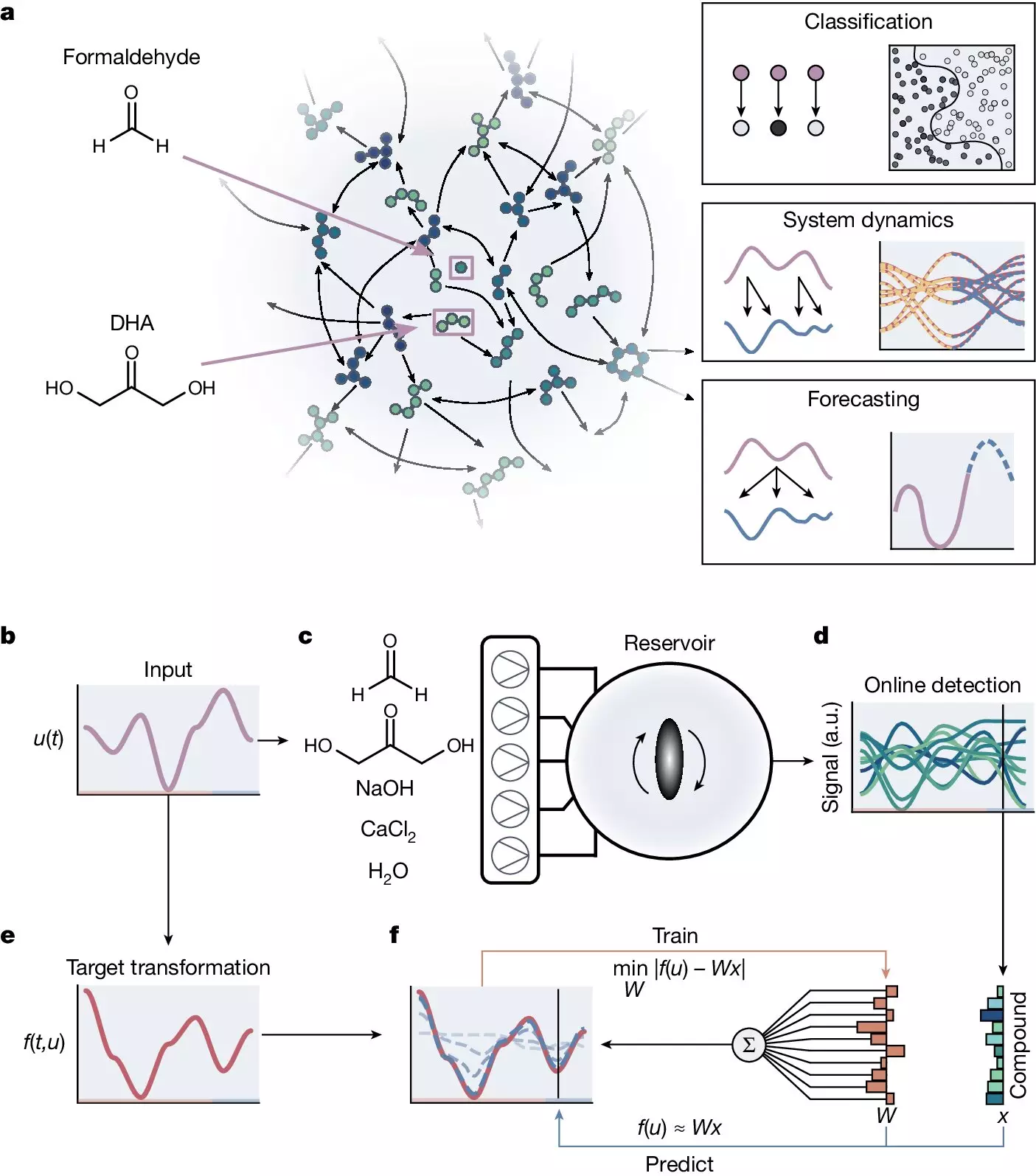Molecular computing has taken a significant leap forward with the groundbreaking research conducted by the Institute for Molecules and Materials at Radboud University in the Netherlands. The team of researchers, led by Prof. Wilhelm Huck, has demonstrated that a complex self-organizing chemical reaction network is capable of performing various computational tasks, including nonlinear classification and complex dynamics prediction. This advancement has piqued the interest of scientists looking to leverage the computational power of chemical and biological systems.
In traditional computing systems, the chemical reactions or molecular processes within the system act as a reservoir computer, transforming inputs into high-dimensional outputs. This approach allows for the exploration of the intricate computational abilities that chemical and biological networks inherently possess. While the potential of these systems is vast, the implementation of molecular computing presents challenges in terms of engineering and design. Instead of attempting to engineer molecular systems to perform specific computational tasks, Prof. Huck and his team are delving into how naturally complex chemical systems can exhibit emergent computational properties.
One of the key elements of the research is the formose reaction, a chemical reaction that synthesizes sugars from formaldehyde in the presence of a catalyst. This reaction was selected due to its unique properties, particularly its highly non-linear topology with numerous positive and negative feedback loops. Unlike typical linear reaction sequences, the formose reaction produces multiple intermediate compounds that further react to form new compounds. These dynamic reactions generate a diverse set of chemical species and are inherently non-linear in nature.
To implement the formose reaction, the researchers utilized a continuous stirred tank reactor (CSTR) that allowed them to control the input concentrations of four reactants. By leveraging a mass spectrometer, the team was able to track up to 10^6 molecules and perform calculations based on the reactant concentrations. The system required training to determine the outcome of computations, utilizing a set of weights to convert the mass spectrometer traces into the correct value.
The research team employed the reservoir computer to tackle various computational tasks, showcasing its ability to emulate Boolean logic gates, predict complex metabolic network models, and forecast future states of chaotic systems. Additionally, the system exhibited short-term memory capabilities and demonstrated a chemical readout using colorimetric reactions. This innovative approach to molecular computing offers a more scalable and flexible solution, merging artificial systems with the information processing capabilities of living cells.
The implications of this research extend beyond molecular computing, offering insights into the potential origins of life and the development of information processing capabilities in early biological systems. Prof. Huck and his team are exploring the integration of reservoir computing into chemical systems that can sense their environment, process information, and take appropriate action. This novel approach opens up possibilities for creating autonomous chemical systems capable of responding to their surroundings without external electronic control.
The future of molecular computing holds promise for neuromorphic computing, which aims to mimic the neural structure and functioning of the human brain to enhance computational efficiency. Ongoing research collaborations with organizations like IBM Zurich are pushing the boundaries of computing power and energy efficiency. As the field of molecular computing continues to evolve, the potential for revolutionary advancements in artificial intelligence and biotechnology looms on the horizon.


Leave a Reply